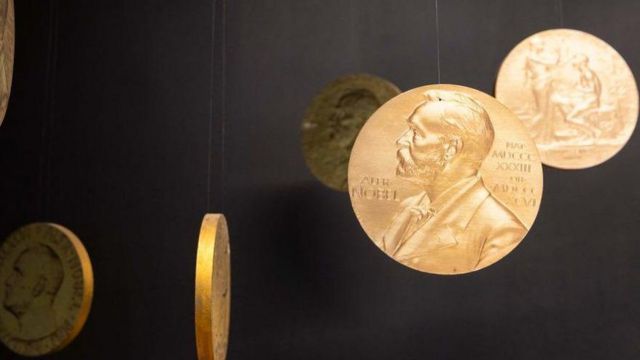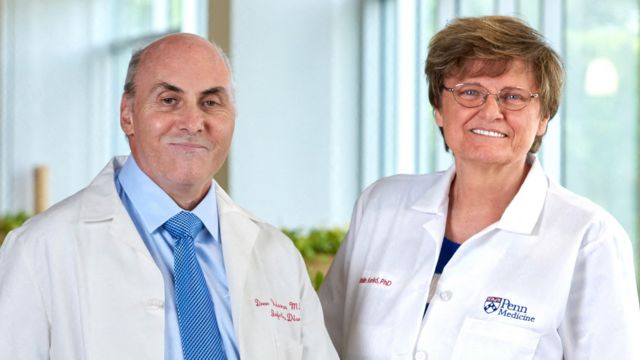The number of lives saved by newly crowned Nobel Laureates Drew Weissman and Katalin Karikó already exceeds one million.
The 2023 Nobel Prize in Physiology or Medicine was awarded to Katalin Karikó (Hungary) and Drew Weissman (USA) for their discoveries that enabled the development of a new type of vaccine based on RNA.
Over the past two and a half years of the coronavirus pandemic, the use of RNA vaccines to prevent Covid-19 has helped save tens of millions of lives.
As the Secretary General of the Nobel Committee said, “In a world that has just experienced a terrible epidemic of a new infectious disease – and, unfortunately, probably not the last one – it is hard to overestimate the work of the new laureates.
Last year, Swedish geneticist Svante Pääbo received the highest medical honor for his research on the genomes of extinct hominids and human evolution.
In the medical world, it is difficult to find a single opinion that the overwhelming majority of physicians around the world unanimously and unconditionally agree with. After all, truth is born in controversy, facts are stubborn, and evidence-based medicine has a well-deserved reputation as one of the most rigorous scientific disciplines.
And yet, in a world that has just experienced the COVID pandemic, it is unlikely that anyone would seriously argue that the developers of RNA vaccines did not deserve their “Nobel Prize” and that it was only a matter of time before they were awarded it.
When the world was swept up in the wave of Covid-19, it was this very technology that helped tame the pandemic by quickly developing effective and safe drugs to prevent the coronavirus.
Currently, RNA vaccines are being used to vaccinate against COVID in all developed countries. In total, approximately one billion people have been vaccinated using this technology.
So the newly crowned laureates, Kariko and Weissman, have tens, if not hundreds, of millions of lives saved to their credit.
We explain quickly, simply, and clearly what happened, why it matters, and what happens next. Episodes The end of the story: Promotional Podcasts.
It is hard to believe, but just three years ago, there was not a single RNA vaccine in the world that had received regulatory approval. Moreover, we are not even talking about a global statement (at the WHO level), but about national medical recommendations.
Drugs produced by this technology have never been used to prevent human diseases in any country in the world.
However, the reason for this is not that the medical community had any particular claims for RNA vaccines – not at all.
It’s just that the technology itself was so new that it hadn’t been properly tested in humans, and there was still a need to fully ensure its safety.
However, RNA-based drugs have a number of advantages over “traditional” vaccines.
First of all, they do not contain the pathogen itself (even in weakened form) – which means that it is impossible, even theoretically, to get infected accidentally as a result of vaccination – this is completely excluded.
Second, for the same reason, RNA vaccines are easier and cheaper to produce – if you don’t get infected while working with the drug, you don’t have to spend money on special safety measures for employees.
Third, immunity from RNA vaccines is thought to be more robust because immune mechanisms are activated at both the cellular and intercellular levels.
But the most important thing is that RNA technology makes it possible to develop an effective vaccine against a new, previously unknown pathogen (virus or bacteria) in record time – with a relatively high chance of success.
In the conditions of the COVID pandemic, time was of the essence, leaving health professionals with no choice.
Waiting for the invention of “more proven drugs” was essentially a death sentence for the most vulnerable populations – the elderly, the disabled and the chronically ill.
And the technology did not disappoint, living up to all expectations.
The entire Pfizer vaccine development cycle, from start to finish, was completed in an incredibly short time, within one calendar year.
The sequencing of the genome of an unknown virus was completed on January 11. On December 31, the drug, which had just completed its first large-scale trials, received emergency WHO approval, allowing the long-awaited vaccination to begin.

Since 1901, a total of 112 Nobel Prizes in Physiology or Medicine have been awarded to 224 individuals.
The statutes of the Nobel Foundation stipulate that the prize may be divided equally between two works if each proves worthy of the prize. If the winning work was created by two or three authors, it will be awarded jointly to them.
39 prizes in medicine were awarded to only one recipient. 34 prizes were shared by two individuals, and another 39 prizes were shared by three recipients.
The Nobel Prize in Physiology or Medicine was not awarded nine times: 1915-1918, 1921, 1925, and 1940-1942.
According to the rules of the Nobel Committee, if none of the works considered appears to the experts to be advanced and unique enough, the prize fund is carried over to the following year.
There are 12 women among the winners of the Nobel Prize in Physiology or Medicine. Of these, only Barbara McClintock received it alone, without co-authors, in 1983.
To date, the youngest winner of the Nobel Prize in Physiology or Medicine is Frederick G. Banting, who received it in 1923 at the age of 32. The oldest recipient is Peyton Rouss, who was 87 years old when he received the award in 1966.
In the Nobel Committee’s database you can find interesting facts about the nominations. For example, the Austrian neurologist and founder of psychoanalysis Sigmund Freud (1856-1939) was nominated for the Nobel Prize in Physiology or Medicine 32 times, but never won.
In 1929, the Nobel Committee for Medicine hired an expert who concluded that there was no need to consider Freud’s candidacy further because Freud’s work had no proven scientific value.
In 1936, Freud was even nominated for the Nobel Prize in Literature. This was done by Freud’s acquaintance, Nobel laureate Romain Rolland.
According to the rules of the committee, the names of the nominees are kept secret for 50 years. So it will be half a century before we find out who competed with this year’s winners.
Scientists often have to wait decades for their work to be recognized: the scientific community wants to be sure that a particular scientific breakthrough will stand the test of time.
In fact, Nobel’s will states that the prizes should be awarded to those who have done the most for humanity during the previous year.
The World Prize Committee is the only committee that does not deviate from this rule and regularly awards a prize for achievements in the previous year.
Alfred Nobel left the bulk of his estate – more than 31 million Swedish kronor (now more than 1.7 billion kronor, about $153 million) – for this purpose.
This amount was converted into a fund and invested in reliable securities. The income from these investments is to be distributed annually as prizes to those who have done the most for humanity during the previous year.
This year, the monetary portion of the full Nobel Prize amounts to 11 million kronor – almost exactly $1 million. Since there are two winners in this category, each will receive half of this amount.


